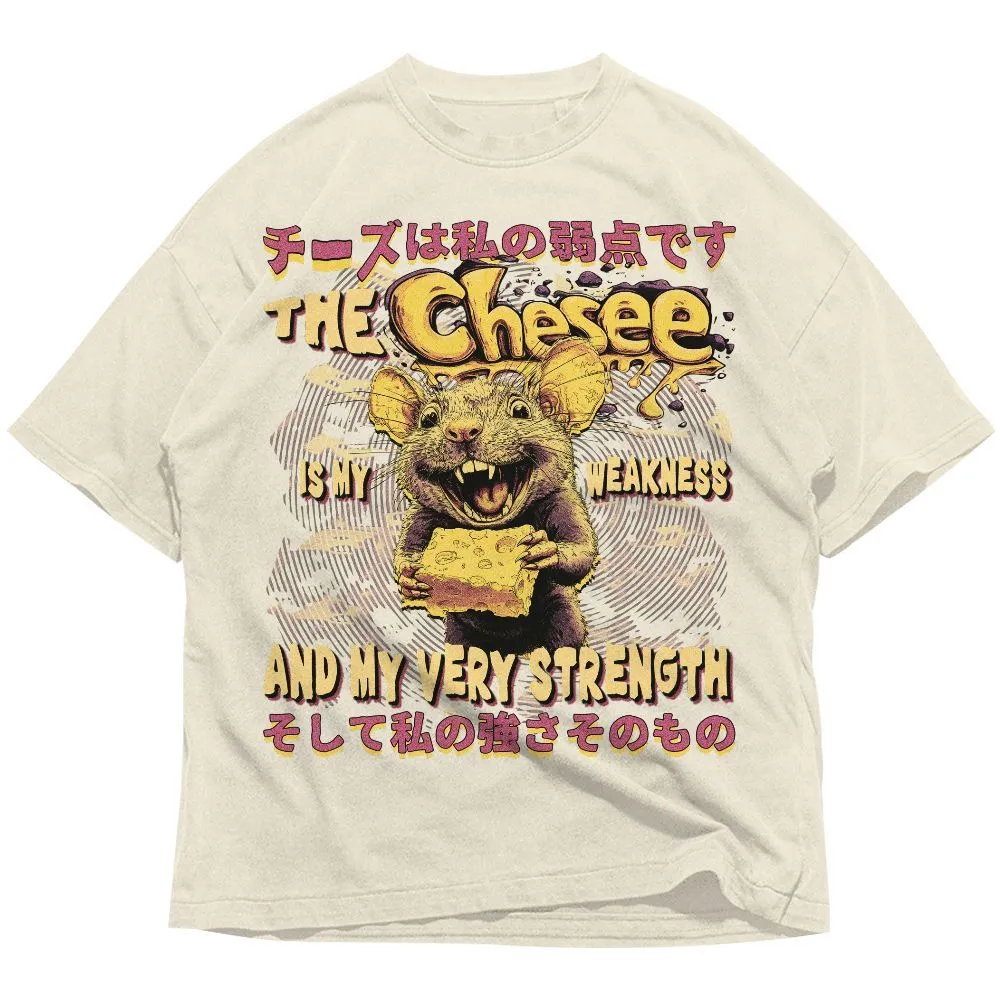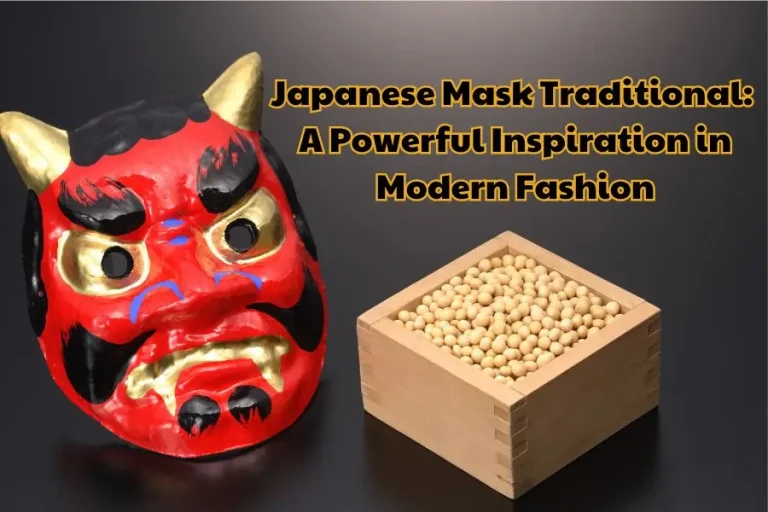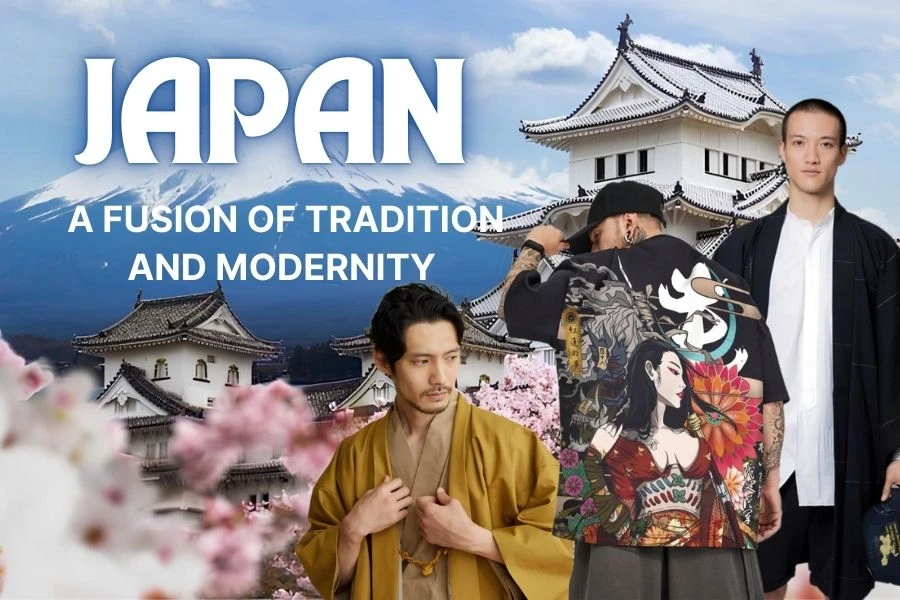
The diverse traditional Japanese clothing represents a distinctive national identity that developed through various historical periods. Over many generations, these cultural garments belonged to samurai, warriors, and noble Japanese residents. Despite their disappearance from daily fashion, modern Japan continues to use traditional Japanese clothing when celebrating cultural events that include both ceremonies and festivals.
In recent years, the trend of combining traditional elements with modern fashion has become increasingly popular in Japan. Designers have cleverly innovated classic costumes such as kimono, yukata, or hakama to fit today’s fashion style, but still retain the unique cultural spirit. In this article, we will explore traditional Japanese clothing for men from the past and how it can be combined with the modern fashion of young people
Traditional Japanese Clothing for Men
Traditional male Japanese clothing consists of Kimono, Yukata, Hakama and other items.
Happi
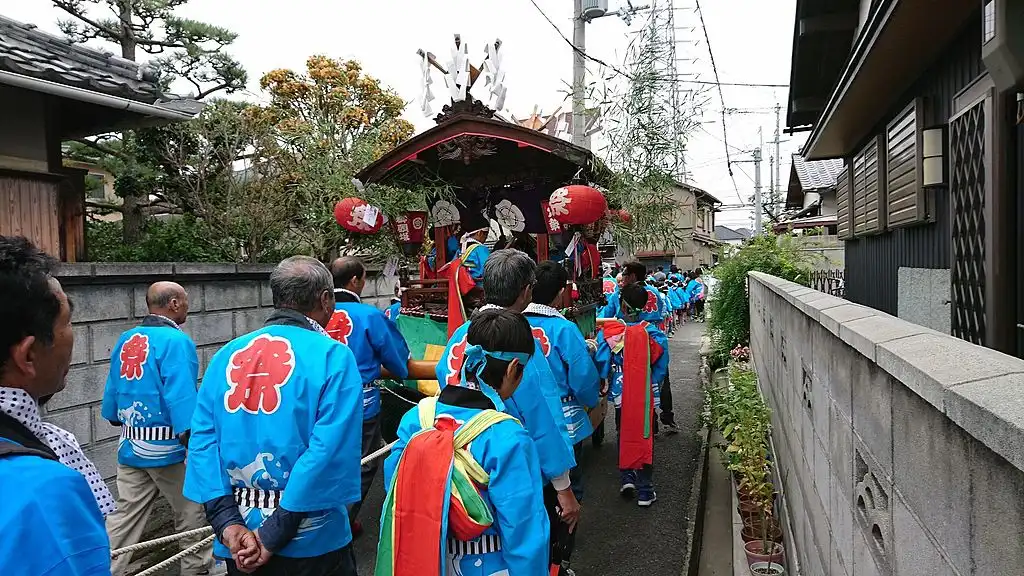
Happi is a traditional coat that usually only reaches the hips or knees and is secured with a belt or obi around the waist. In fact, the wearer rarely ties the shirt but often leaves the front open for comfort and freedom of movement. Initially, Happi was used as a uniform for servants in noble families, with the family symbol (Kamon) printed on the back of the shirt. So the shirt color is quite monotonous, usually brown or indigo.
Nowadays, Happi is designed with more colorful patterns and colors to match the joyful atmosphere of festivals. You will typically find Happi in deep blue color patterns with white or red designs during traditional events like matsuri and cultural celebrations.
Hakama
The pleated pants that Japanese people often wear over Kimonos when practicing the martial arts of aikido, kendo and kyudo are Hakama. The seven folds on the pants (five in the front and two in the back) symbolize the seven virtues of the samurai: courage, kindness, integrity, politeness, faithfulness, loyalty and honor. That’s why Hakama is usually only for male samurai clothes.
Kasa
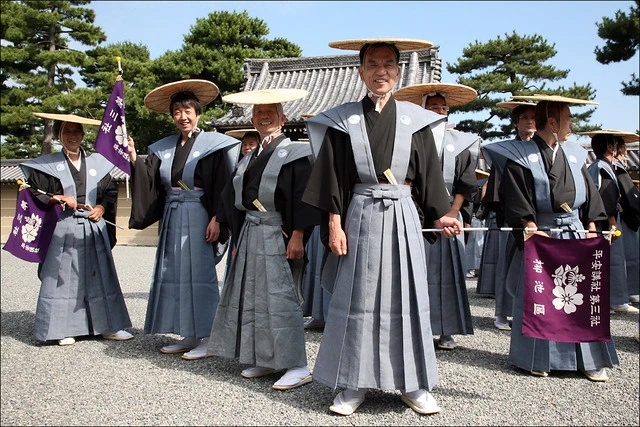
Kasa is a Japanese term referring to traditional Japanese hats. There are various types of Kasa, such as Sugegasa, Tengai, Jingasa, and Amigasa. These hats serve three main functions: to provide protection from the sun and rain, as well as to be used in battle.
Kimono
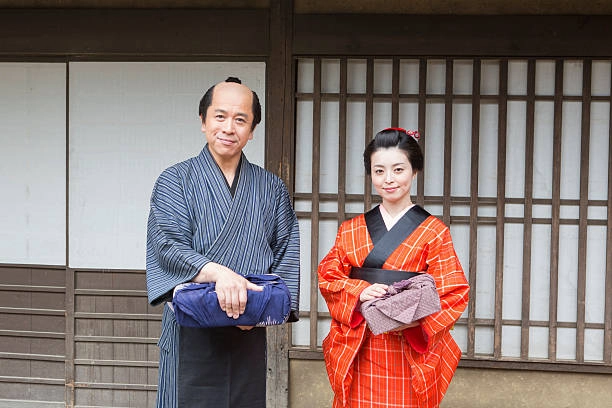
If you are a fan of Japanese movies, you are certainly no longer unfamiliar with the images of traditional Japanese clothing for men – Kimonos. Nowadays, you can see colorful kimonos on special occasions such as weddings, tea ceremonies, or festivals. The way of wearing a kimono, from folding and tying the belt to layering, clearly shows the aesthetic spirit and cultural values of the Japanese people. Kimono is also a tradition Japanese clothing for women.
Fundoshi
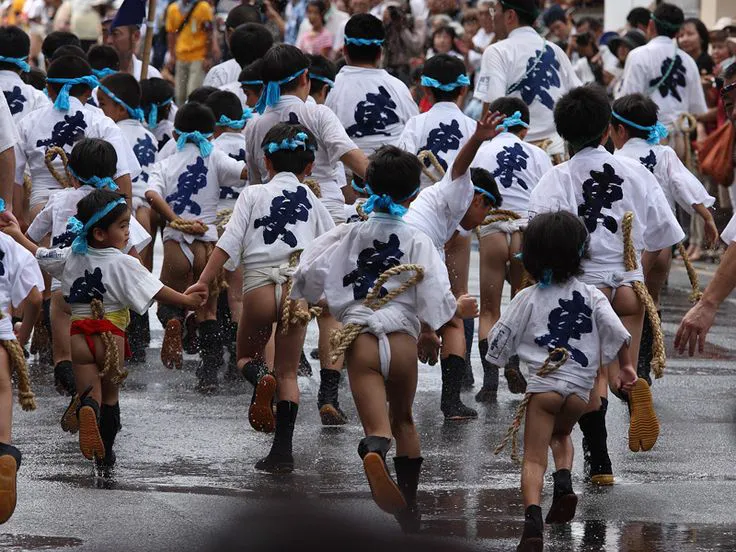
Before Western-style underwear became widespread, Fundoshi was the traditional undergarment for Japanese men. It is a long strip of cloth wrapped around the waist and passed between the legs to secure and cover private areas. This design provides comfort and breathability, making it well-suited for Japan’s hot and humid climate.
Occasionally, Japanese men together with young boys continue wearing fundoshi during traditional festivals, and of course, in sumo wrestling matches.
Haori
Quite similar to Happi, Haori is a traditional Japanese clothing for men and women, hip or thigh length, often worn over a kimono. However, Haori has a more sophisticated design with higher-quality fabric. Therefore, this shirt is considered a symbol of the noble status of the ancient Japanese aristocracy. Later, this outfit became more popular with the merchant class and people.
Yukata
Many people often mistake Yukata and Kimono as the same thing, but Yukata has a simpler design, has no inner lining, and is easier to wear. In other words, Yukata is a simplified version of the kimono, suitable for summer and not too formal events, while the kimono is more traditional and luxurious, often worn on special occasions.
Kamishimo
Another traditional Japanese clothing for men is Kamishimo, which is a combination of wide-pleated Hakama pants and a Kataginu vest. The Kataginu features broad, stiff, triangular-shaped shoulders designed to give the wearer a dignified and authoritative appearance.
A Fusion of Tradition and Modernity
Nowadays, instead of wearing a Kimono or Yukata, many young Japanese people incorporate traditional culture into modern clothing. This trend blends traditional patterns, symbols, and the spirit of Japan into popular items such as t-shirts, hoodies, and jackets.
Modern Yukata Shirt
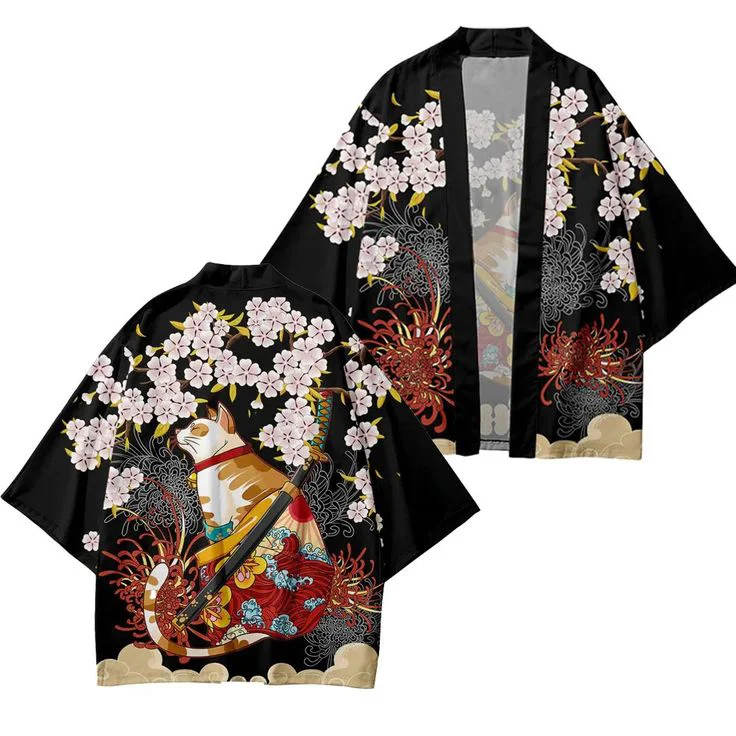
The modern Yukata shirt is an innovative version that is convenient and more suitable for today’s fashion style. Instead of a long dress like the classic Yukata, this design is shortened to a shirt or light jacket. Young designers are also flexible in combining traditional motifs such as Seigaiha waves, Kumo clouds, or cherry blossoms.
Japanese Samurai Harajuku Style T-shirt
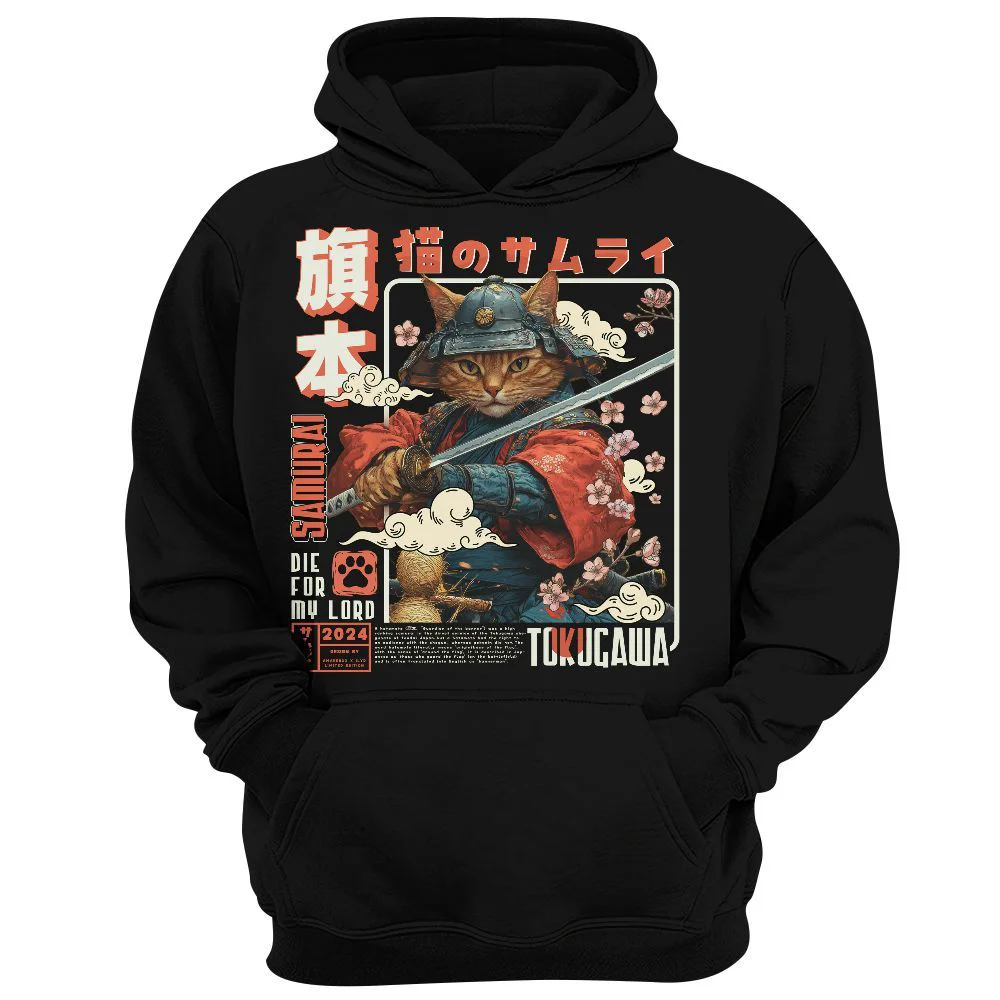
Warrior cats, cherry blossoms, and kanji on the Japanese Samurai Harajuku Style T-shirt are reminiscent of the glorious Edo period of the samurai. Samurai spirit and Harajuku style combined with a street hoodie bearing a strong impression of Japanese culture.
Modern Hakama Pants
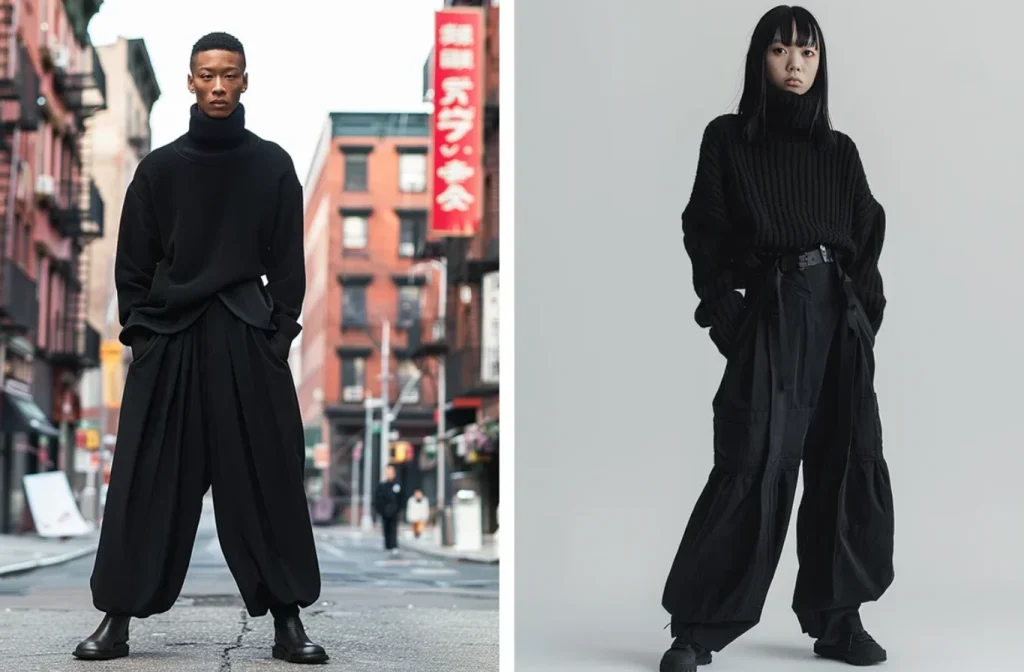
Modern Hakama pants still retain the loose fit and characteristic pleats but are minimalist to suit modern outfits. Materials and colors are more diverse, making it easy to combine with shirts, hoodies, or blazers. This innovation helps Hakama become more flexible in street fashion while still retaining traditional Japanese characteristics.
Sushi Salmon Japanese T-shirt

The Sushi Salmon Japanese T-shirt represents the Japanese spirit through the image of sushi – a traditional culinary symbol. Modern design style with creative drawings and outstanding colors helps the shirt become youthful and trendy. This is an impressive way of combining traditional culture into streetwear fashion.
Kimono Cardigan
Kimono cardigan has the ability to be flexibly combined with many different styles. It can be combined with a t-shirt and jeans to create a dynamic look, or combined with traditional clothing such as hakama to maintain a classic look. Thanks to its spacious design and distinctive patterns, the kimono cardigan is suitable for both street and casual fashion.
Bottom Line
Whether traditional or modern, Japanese fashion is always rich and diverse. Today’s designs are innovative, harmoniously combining modern elements and traditional aesthetic values. Thanks to that, Japanese fashion can reach young people in a new and more trendy way.
